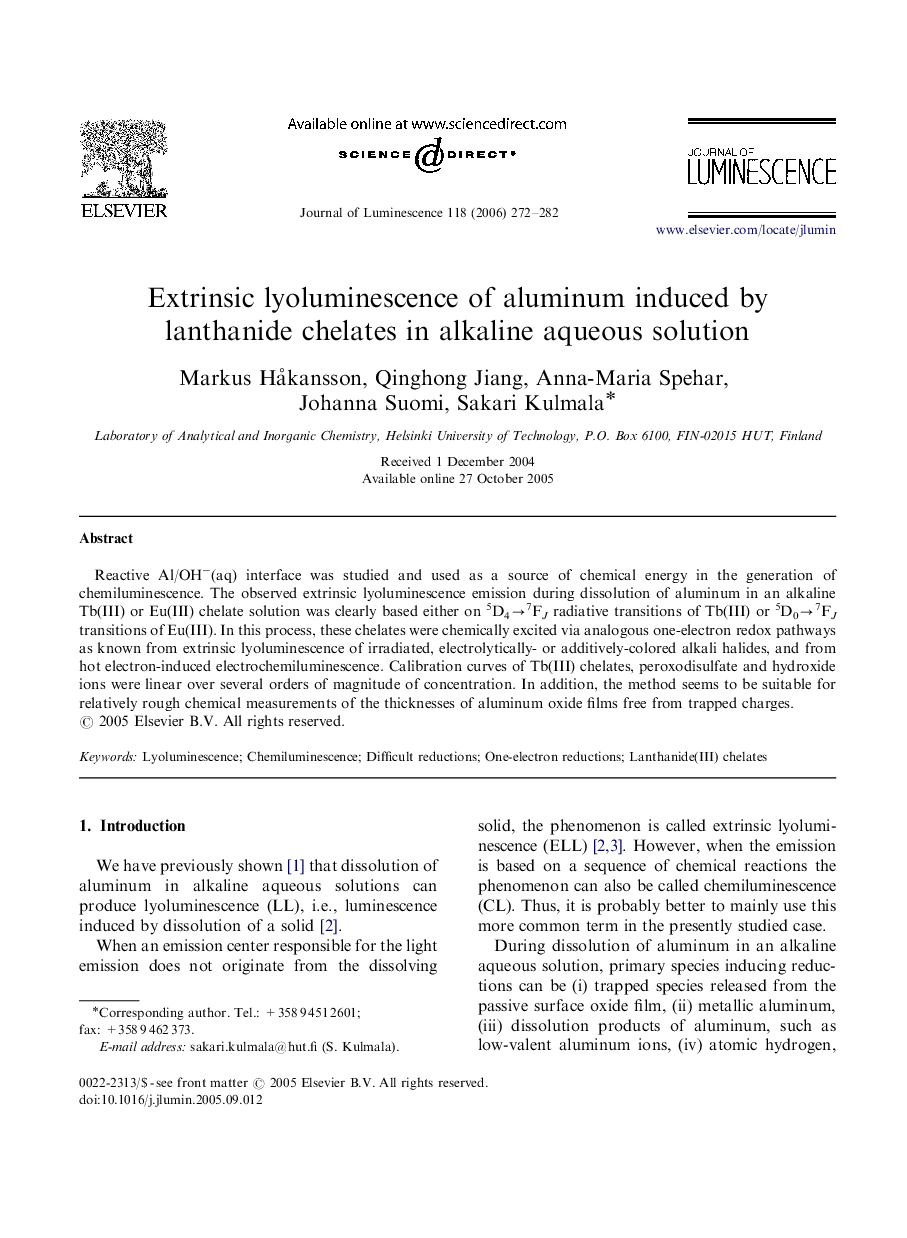| Article ID | Journal | Published Year | Pages | File Type |
|---|---|---|---|---|
| 5404311 | Journal of Luminescence | 2006 | 11 Pages |
Abstract
Reactive Al/OHâ(aq) interface was studied and used as a source of chemical energy in the generation of chemiluminescence. The observed extrinsic lyoluminescence emission during dissolution of aluminum in an alkaline Tb(III) or Eu(III) chelate solution was clearly based either on 5D4â7FJ radiative transitions of Tb(III) or 5D0â7FJ transitions of Eu(III). In this process, these chelates were chemically excited via analogous one-electron redox pathways as known from extrinsic lyoluminescence of irradiated, electrolytically- or additively-colored alkali halides, and from hot electron-induced electrochemiluminescence. Calibration curves of Tb(III) chelates, peroxodisulfate and hydroxide ions were linear over several orders of magnitude of concentration. In addition, the method seems to be suitable for relatively rough chemical measurements of the thicknesses of aluminum oxide films free from trapped charges.
Keywords
Related Topics
Physical Sciences and Engineering
Chemistry
Physical and Theoretical Chemistry
Authors
Markus HÃ¥kansson, Qinghong Jiang, Anna-Maria Spehar, Johanna Suomi, Sakari Kulmala,
